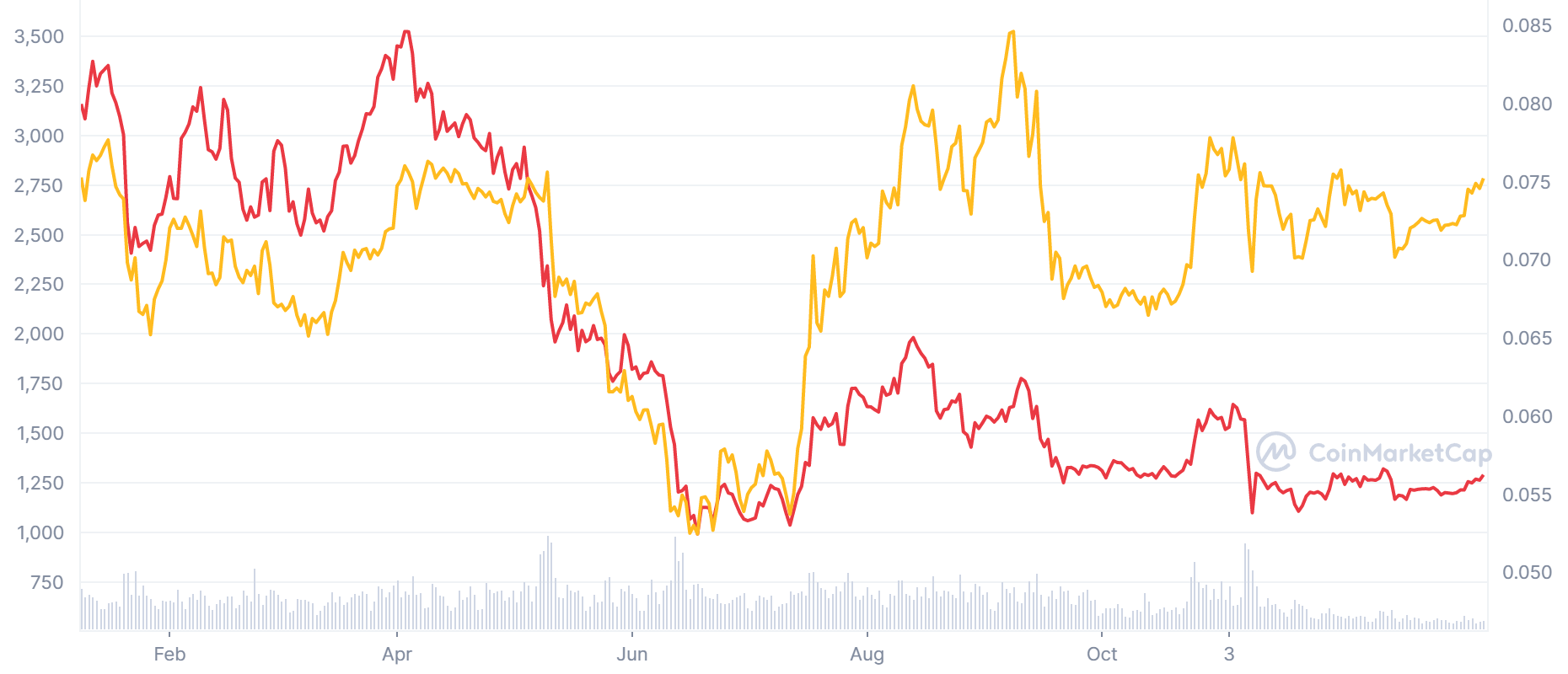The crypto market is preparing for the unknowable as a new year begins. What are the primary obstacles and objectives?
If 2022 served as any kind of a guide for estimating what the cryptocurrency market would have in store for investors in the future, it would have been extremely hard to forecast. The global crypto market capitalisation was brutally shocked, falling by slightly over 60% from $2.2 trillion to around $797 billion so far this year. The two biggest cryptocurrencies by market cap, BTC and ETH, fell by 64% and 67%, respectively, during the same period, while the alt market also saw a decline at the same time.

These price declines and the closure of the FTX exchange were not anticipated occurrences by many, if any. Furthermore, since certain cryptocurrency projects and venture funds still have treasury accounts on the exchange, the consequences from the FTX fiasco is not yet ended.
Nevertheless, if 2022 was genuinely chaotic, then 2023 must have something more promising to offer, although growth is probably going to be sluggish in the first quarter, if not the entire year.
The same trend will it repeat in 2023?
The horrific events of 2022 will unavoidably be followed by a time of adjustment, settling, and refocusing, all of which will lead to months of introspection and anxious reconviction before change emerges in the market
In the medium term, it is also doubtful that the macroeconomic environment will shift dramatically. The 'crypto winter' will last at least a little bit. But change is inevitable. It remains to be seen yet whether it will be corporately or investor-led.
Although it may seem counterintuitive, it would not be surprising if risk-taking investors moved sooner in the year rather than later. As the market matures and confidence rises again, there should be a change in the market's favour. Additionally, you may read about the predicted progress in DeFi and NFTs below.
Defi in 2023: Problems with liquidity and luring retail use
DeFi will continue to struggle with liquidity incentives and the bootstrapping of services as trade volume and liquidity decline throughout the crypto industry. Since the inception of DeFi, methods for obtaining this passive liquidity have been steadily developing, from reward mechanisms for mining liquidity to more recent ideas like protocol-owned liquidity. DeFi will need to find a solution to this issue in the coming year in order to be a viable alternative to centralised financial services.
Token incentives for trading and market making have shown to be unsustainable, frequently encouraging wash trading or the "farm-dumping" of platform assets. The majority of retail users lack the time or skills necessary to manage their roles and perform effectively. Retail investors may be significantly discouraged from investing money in the DeFi space due to this intricacy.
There needs to be a shift toward more organised product offers by 2023. I had a conversation with IceCreamMan, a founder member of the Layer 2 protocol Arbitrum project JONES. He mentioned the jUSDC stablecoin vault, which earns blue chip returns by lending to other Jones structured products in a safe, transparent manner that is enforced by smart contracts, during the explanation of their structured offers. And although this makes clear to the retail user the underlying complexity of the DeFi market, it also demonstrates the number of individuals working to streamline the procedure and make the area (and its advantages) more accessible.
Issues with regulations and enticing institutional use
Many institutions are reluctant to invest in decentralised distributed ledger technology because regulation will become more prominent around the end of 2022 and because of the uncertainty that will accompany it. The concept of "permitted DeFi" may hold the key to helping institutions get over their regulatory headaches.
By November 2022, a brand-new system that provided on-chain verified credentials was being used by J.P. Morgan and DBS Bank to deal in foreign bonds on the Polygon blockchain. This, in my opinion, is a pioneering use of tokenized deposits on a public blockchain by a large bank. I anticipate that in 2023 there will be more government-led (if not entirely backed) programmes that collaborate and investigate the adoption of DeFi in association with different business titans.
Despite the fact that "permissioned DeFi" is not inherently decentralised, it is still unclear how far institutions will go to protect their clients' interests and how much authority, if any, they are ready to give up in the name of decentralisation and decentralised finance. Most likely, there will be conflict between customers who choose real crypto-native platforms, like XGo, to support and bridge their DeFi experiences and traditional financial institutions seeking to employ DeFi for their clientele.
